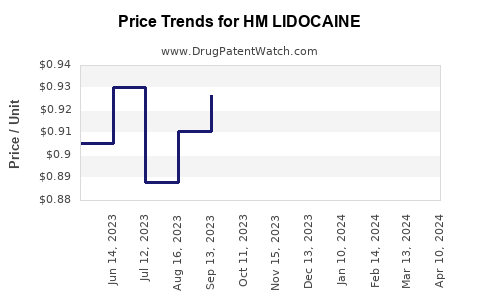Drug Price Trends for HM LIDOCAINE
✉ Email this page to a colleague

Average Pharmacy Cost for HM LIDOCAINE
| Drug Name | NDC | Price/Unit ($) | Unit | Date |
|---|---|---|---|---|
| HM LIDOCAINE 4% PATCH | 62011-0415-01 | 0.92621 | EACH | 2024-09-18 |
| HM LIDOCAINE 4% PATCH | 62011-0415-01 | 0.80999 | EACH | 2024-08-21 |
| HM LIDOCAINE 4% PATCH | 62011-0415-01 | 0.72103 | EACH | 2024-07-17 |
| HM LIDOCAINE 4% PATCH | 62011-0415-01 | 0.83102 | EACH | 2024-06-19 |
| >Drug Name | >NDC | >Price/Unit ($) | >Unit | >Date |


